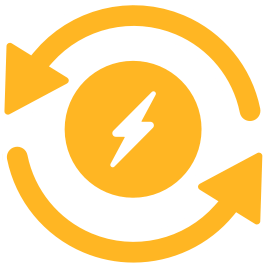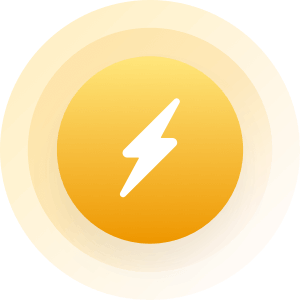| Topic: My site development thread for people who want to learn. | |
|---|---|
|
As some people know I go to school for Information Technology.
So I am going to start this thread to help others to know more about computers as well. Here is some definitions to help you understand terms used in computers. I will update information on this page to help you understand web development as I go, so keep checking out this thread, and if you have any questions just ask me. 1. Markup language: A series of commands to format, organize and describe information on a web page. 2. Hypertext Markup Language (HTML) : The traditional authoring language used to develop web pages for many applications. 3. Extensible Hypertext Markup Language (XHTML): The current standard authoring languages and other electronically displayed documents . XHTML requires stricter code syntax than HTML. 4. Wireless Application Protocol (WAP): a standard protocol that presents the text portions of the web to wireless devices. 5. Wireless Markup Language (WML): A markup language that presents the text portions of the web pages to wireless devices. 6. Multipurpose Internet Mail Extensions (MIME): A protocol that enables operating systems to map file name extensions to corresponding application. Also used by applications to automatically process files downloaded from the internet. 7. Graphical User Interface (GUI): A program that provides visual navigation with menus and screen icons, and performs automated functions when users click command buttons. 8. Image map: A set of coordinates on an image that creates a “hot spot” which acts as a hyperlink when clicked. 9. User Agent: Ant application, such as a web browser, cell phone, PDA or help engine, that renders HTNL for display to user. 10. Mailing list server: An e-mail server that regularly sends e-mail to a specific list of users. 11. Spam: Unsolicited and unwanted e-mail messages; the online equivalent of junk mail. 12. Cookie: A text file that contains information sent between a server and a client to help maintain state and track user activities. Cookies can reside in memory on a hard drive. 13. Structured Query Language (SQL): A language to create and maintain professional high- performance corporate databases. 14. Bandwidth: The amount of information, sometimes called traffic, that can be carried on a network at one time. The total capacity of a line. Also the rate of data transfer over a network connection; measured in bits per second. 15. T1: A digital carrier that transmits data at a speed of 1.544 Mbps. If you are in site development please e-mail me. |
|
|
|
|
|
Why do I have to click the "start" button in order to turn my computer OFF????
|
|
|
|
|
|
What's a computer?
|
|
|
|
|
|
Why do I have to click the "start" button in order to turn my computer OFF???? |
|
|
|
|
|
59 6f 75 27 72 65 20 61 20 66 75 63 6b 69 6e 67 20 61 73 73 68 6f 6c 65 2e
|
|
|
|
|
|
59 6f 75 27 72 65 20 61 20 66 75 63 6b 69 6e 67 20 61 73 73 68 6f 6c 65 2e Hint, hint.... http://home2.paulschou.net/tools/xlate/ |
|
|
|
|
|
Isn't that the point of this website?
Why do I have to click the "start" button in order to turn my computer OFF???? |
|
|
|
|
|
Thanks for the info. I learned alot

Would love to learn how to make a great website from scratch one day 
|
|
|
|
|
|
Isn't that the point of this website? Why do I have to click the "start" button in order to turn my computer OFF???? |
|
|
|
|
|
Edited by
jgfran01
on
Tue 06/16/09 01:37 AM
|
|
|
Question 1.
What are good coding practices? How can these be integrated into the learning of how to code in XHTML? What effects will it have on a web page if container tags or stand-alone non-empty tags are not used when coding in HTML? It is always good to add comments to your tags, (shown in figure 1.) so that you can refer to them later, and make easy changes to your tags for troubleshooting. Also it is important to make four main tags first, and then add text to help you keep the tags in order. Always make notes on your changes (save your changes in your computer for documentation), follow your civil right laws, and make your site validated. Test your site, and implement web standards by using certain DOCTPES (strict or transitional). This will show that you have correctly implemented certain XHTML. Remember the four main tags, (shown in figure 2.), and end your tags (shown in figure 3.). Figure 1. <!-- This is a comment. It does not affect this page.-- > <!-- The head of a web page contains code that does not appear on the web page. -- > Figure 2. <html> <head> <title> <body> Figure 3. </font> </body> </html> (Make sure to place a / character in your tags. The slash appears before the element name for the stand-alone non-empty tags.). Container tags are used to affect a certain portion of your material. They utilize the on/off approach. Container tags operate on the material between the opening tag < tag> and the closing tag </ tag>. If you do not put container tags in properly or empty tags it will keep your HTML from validating. Note: This was written by myself for class. |
|
|
|
|
|
Question 1. What are good coding practices? How can these be integrated into the learning of how to code in XHTML? What effects will it have on a web page if container tags or stand-alone non-empty tags are not used when coding in HTML? It is always good to add comments to your tags, (shown in figure 1.) so that you can refer to them later, and make easy changes to your tags for troubleshooting. Also it is important to make four main tags first, and then add text to help you keep the tags in order. Always make notes on your changes (save your changes in your computer for documentation), follow your civil right laws, and make your site validated. Test your site, and implement web standards by using certain DOCTPES (strict or transitional). This will show that you have correctly implemented certain XHTML. Remember the four main tags, (shown in figure 2.), and end your tags (shown in figure 3.). Figure 1. <!-- This is a comment. It does not affect this page.-- > <!-- The head of a web page contains code that does not appear on the web page. -- > Figure 2. <html> <head> <title> <body> Figure 3. </font> </body> </html> (Make sure to place a / character in your tags. The slash appears before the element name for the stand-alone non-empty tags.). Container tags are used to affect a certain portion of your material. They utilize the on/off approach. Container tags operate on the material between the opening tag < tag> and the closing tag </ tag>. If you do not put container tags in properly or empty tags it will keep your HTML from validating. Note: This was written by myself for class. I don't recall anyone asking that question. |
|
|
|
|

|
|
|
|
|
|
Question 1. What are good coding practices? How can these be integrated into the learning of how to code in XHTML? What effects will it have on a web page if container tags or stand-alone non-empty tags are not used when coding in HTML? It is always good to add comments to your tags, (shown in figure 1.) so that you can refer to them later, and make easy changes to your tags for troubleshooting. Also it is important to make four main tags first, and then add text to help you keep the tags in order. Always make notes on your changes (save your changes in your computer for documentation), follow your civil right laws, and make your site validated. Test your site, and implement web standards by using certain DOCTPES (strict or transitional). This will show that you have correctly implemented certain XHTML. Remember the four main tags, (shown in figure 2.), and end your tags (shown in figure 3.). Figure 1. <!-- This is a comment. It does not affect this page.-- > <!-- The head of a web page contains code that does not appear on the web page. -- > Figure 2. <html> <head> <title> <body> Figure 3. </font> </body> </html> (Make sure to place a / character in your tags. The slash appears before the element name for the stand-alone non-empty tags.). Container tags are used to affect a certain portion of your material. They utilize the on/off approach. Container tags operate on the material between the opening tag < tag> and the closing tag </ tag>. If you do not put container tags in properly or empty tags it will keep your HTML from validating. Note: This was written by myself for class. I don't recall anyone asking that question. I did revise it tho before I turned it in today. |
|
|
|
|
|
Question 1. What are good coding practices? How can these be integrated into the learning of how to code in XHTML? What effects will it have on a web page if container tags or stand-alone non-empty tags are not used when coding in HTML? It is always good to add comments to your tags, (shown in figure 1.) so that you can refer to them later, and make easy changes to your tags for troubleshooting. Also it is important to make four main tags first, and then add text to help you keep the tags in order. Always make notes on your changes (save your changes in your computer for documentation), follow your civil right laws, and make your site validated. Test your site, and implement web standards by using certain DOCTPES (strict or transitional). This will show that you have correctly implemented certain XHTML. Remember the four main tags, (shown in figure 2.), and end your tags (shown in figure 3.). Figure 1. <!-- This is a comment. It does not affect this page.-- > <!-- The head of a web page contains code that does not appear on the web page. -- > Figure 2. <html> <head> <title> <body> Figure 3. </font> </body> </html> (Make sure to place a / character in your tags. The slash appears before the element name for the stand-alone non-empty tags.). Container tags are used to affect a certain portion of your material. They utilize the on/off approach. Container tags operate on the material between the opening tag < tag> and the closing tag </ tag>. If you do not put container tags in properly or empty tags it will keep your HTML from validating. Note: This was written by myself for class. I don't recall anyone asking that question. I did revise it tho before I turned it in today. Studying html? I'm sorry for you. I have had a few classes in it. I hate it. Besides no body uses pure html. It is only ever used as nothing more than a container for scripts. Mingle2 is done mostly in php from what I have read. |
|
|
|
|
|
Question 1. What are good coding practices? How can these be integrated into the learning of how to code in XHTML? What effects will it have on a web page if container tags or stand-alone non-empty tags are not used when coding in HTML? It is always good to add comments to your tags, (shown in figure 1.) so that you can refer to them later, and make easy changes to your tags for troubleshooting. Also it is important to make four main tags first, and then add text to help you keep the tags in order. Always make notes on your changes (save your changes in your computer for documentation), follow your civil right laws, and make your site validated. Test your site, and implement web standards by using certain DOCTPES (strict or transitional). This will show that you have correctly implemented certain XHTML. Remember the four main tags, (shown in figure 2.), and end your tags (shown in figure 3.). Figure 1. <!-- This is a comment. It does not affect this page.-- > <!-- The head of a web page contains code that does not appear on the web page. -- > Figure 2. <html> <head> <title> <body> Figure 3. </font> </body> </html> (Make sure to place a / character in your tags. The slash appears before the element name for the stand-alone non-empty tags.). Container tags are used to affect a certain portion of your material. They utilize the on/off approach. Container tags operate on the material between the opening tag < tag> and the closing tag </ tag>. If you do not put container tags in properly or empty tags it will keep your HTML from validating. Note: This was written by myself for class. I don't recall anyone asking that question. I did revise it tho before I turned it in today. Studying html? I'm sorry for you. I have had a few classes in it. I hate it. Besides no body uses pure html. It is only ever used as nothing more than a container for scripts. Mingle2 is done mostly in php from what I have read. |
|
|
|
|
|
Question 1. What are good coding practices? How can these be integrated into the learning of how to code in XHTML? What effects will it have on a web page if container tags or stand-alone non-empty tags are not used when coding in HTML? It is always good to add comments to your tags, (shown in figure 1.) so that you can refer to them later, and make easy changes to your tags for troubleshooting. Also it is important to make four main tags first, and then add text to help you keep the tags in order. Always make notes on your changes (save your changes in your computer for documentation), follow your civil right laws, and make your site validated. Test your site, and implement web standards by using certain DOCTPES (strict or transitional). This will show that you have correctly implemented certain XHTML. Remember the four main tags, (shown in figure 2.), and end your tags (shown in figure 3.). Figure 1. <!-- This is a comment. It does not affect this page.-- > <!-- The head of a web page contains code that does not appear on the web page. -- > Figure 2. <html> <head> <title> <body> Figure 3. </font> </body> </html> (Make sure to place a / character in your tags. The slash appears before the element name for the stand-alone non-empty tags.). Container tags are used to affect a certain portion of your material. They utilize the on/off approach. Container tags operate on the material between the opening tag < tag> and the closing tag </ tag>. If you do not put container tags in properly or empty tags it will keep your HTML from validating. Note: This was written by myself for class. I don't recall anyone asking that question. I did revise it tho before I turned it in today. Studying html? I'm sorry for you. I have had a few classes in it. I hate it. Besides no body uses pure html. It is only ever used as nothing more than a container for scripts. Mingle2 is done mostly in php from what I have read. |
|
|
|
|
|
I am trying to learn. I started with a template and then I am making changes by changing the code... It drives me crazy...and I just have this mental block about it. I am just going to let someone else do the coding for me...he tried to walk me through some of it so that I could do it...not pleasant. He has no patience with me and I ask too many questions... I get so frustrated... I even have the book for dummies/idiots on HTML code. I think the dealo is that I just really do not want to know how it all works...I just want to use it for my blogging and writing. I got confused just reading all the definitions. Is this something that you have always just 'understood'? I, obviously, do not get it. |
|
|
|
|
|
Edited by
jgfran01
on
Tue 06/16/09 09:03 PM
|
|
|
No it is not something that I have always understood, that is why I am going to college. I have always used generated codes, but I have learned from them, and now that I am going to school I understand them better. If you like to build web sites then you should take a class on web site development.If you have a pacific questions just ask me here, I check this thread all the time.
|
|
|
|
|
|
HTML and XHTML are only markup languages. That may not mean a whole lot to some of you. Others may have a different understanding of it though. Think of HTML and XHTML as the tools one uses to set up how a page will look. Remember it is not a full fledged programming language and it contains no logic. Also currently the W3C has indicated that you should not be using tables for positioning of things on a page unless it is tabular data as in an actual table.
Most of your positioning and formatting should be done through CSS cascading style sheets. The best references for this subject tend to be those published by Oreilly. I too an attending college but not for web design. I am going for computer science then software engineering. The question here earlier about having to click the start button to turn off your computer might have been better answered simply by pointing out that is only the case with some operating systems such as windows. Even then it could be done properly with keyboard shortcuts if you wanted too. I believe it was originally coded into the windows operating system so people would find it friendly and not obtrusive even though it is how they go to all their programs they have not made shortcuts to each and every time. If a person sees the proper way to shut down and still does it differently after seeing it whos fault is it when their computer HDD crashes or develops bad sectors due to abrupt power surges. JMHO |
|
|
|
|
|
If you press the power button on your computer, most modern machines will interpret this as a request to power off and shut the machine down cleanly. (It uses ACPI.)
To override this, hold the power button in for ~6 seconds. As for the HTML stuff (I'm a full time working web developer). XHTML transitional is to ease the transition from HTML (4.01) to XHTML and should only be used for that, if you're coding from scratch use XHTML Strict. I've started developing a few projects using HTML5. There are several new elements that can add the the semantic richness of the document quite considerably (<article> <section> <header> <footer> <aside> etc etc). Support is pretty poor at the moment, but you can make the new elements block level in the CSS (or Javascript for IE6). One of the exciting feature of HTML 5 is the <video> tag, and a great deal of work has been done to make this backwards compatible with current browsers. Studying html? I'm sorry for you. I have had a few classes in it. I hate it. Besides no body uses pure html. It is only ever used as nothing more than a container for scripts. Mingle2 is done mostly in php from what I have read. Ummmm, no. HTML is the front end to the application that is Mingle2. It is not a container. Try to think of the code that draws the button as HTML and the code that does the work as the application. |
|
|
|
|












